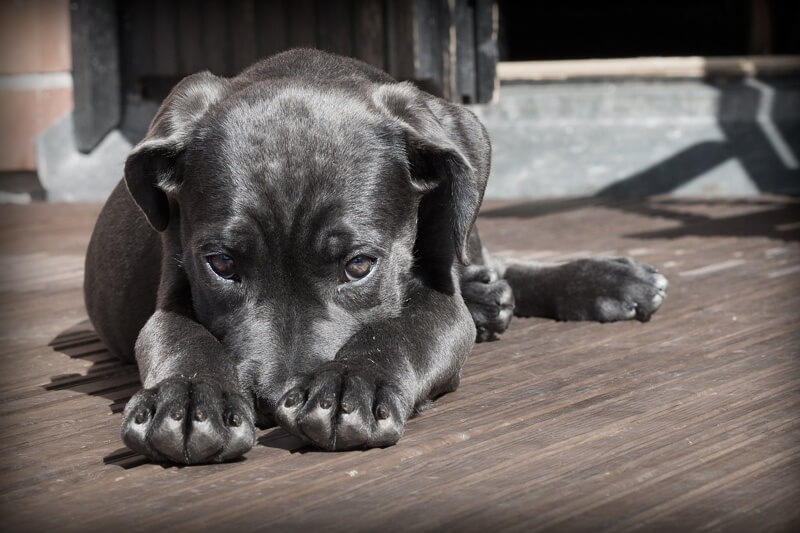Safe And Sound Under the Stars: Tips for Camping with Your Dog
With some careful planning and preparation, you can help your dog enjoy exploring new trails and sleeping under the stars just as much as you do.
Growling, snarling, and biting—these can be scary and even dangerous behaviors if they escalate to the point of injury. If you are a dog parent, you need to know the signs of aggression and what to do if your dog behaves aggressively.
Dog aggression refers to a number of behaviors that typically progress from mild warnings to more severe actions. They include:
Not all dogs will show all of these behaviors or exhibit them in this order but biting rarely happens without some sort of warning. This is helpful since it gives dog parents a chance to diffuse the situation safely if they notice the signs early enough.

Aggression can be a normal response in certain circumstances. For instance, it’s not surprising if a dog gets startled by an unfamiliar person and then growls to let them know to back off. Aggressive behaviors are also part of a dog’s instinctive pack behavior where actions and body language communicate their place in the group. However, aggressive behaviors can become a problem if they get out of hand.
There are lots of triggers that can cause a dog to act aggressively. Some dogs might lash out when they feel threatened, afraid, or frustrated. Others might use aggressive behaviors to guard or protect their territory, possessions, or loved ones.
Dogs who are suffering from a painful injury or health condition can also act hostile. For example, a dog might growl and nip at you if you touch a sore arthritic joint or try to examine a bruised paw. This is why it is so important to handle a sick or hurt dog carefully.

Any dog can act aggressively. However, there are circumstances that can make a dog more likely to show these behaviors, such as:
In addition, males who are not neutered and females who are in heat or nursing can be prone to aggression. Senior dogs can also experience confusion, anxiety, and insecurity, which can lead to aggressive behavior.
You should never judge a dog based on their breed. It is true that some dogs have been bred for specific functions, such as hunting or herding, and they might exhibit certain behaviors based on those traits. However, breed is not a reliable predictor of behavior. Temperament, environment, and experiences with other dogs and people are better clues to how a dog might react in certain situations.
If you are looking to adopt a dog, you should consider the breed in relation to your personality and lifestyle. For instance, if you love going on long hikes, a larger breed such as a Golden Retriever might be a great choice. If you live in a small city apartment, you might want to adopt a toy breed like a Chihuahua or Shih Tzu. Keep in mind that every dog is a unique individual and you should look for the best match for you.
Early and frequent socialization is an important way to help prevent aggressive behavior. Puppies should be socialized with people as soon as possible. Once puppies are vaccinated, they can safely be socialized with other dogs. You can visit friends with well-behaved dogs or sign up for a puppy class to help your furball learn how to behave around other pooches.
Puppies should also be socialized with children under adult supervision. Keep in mind that young children are often very excited about meeting a puppy and may not know how to handle them safely. They should be instructed to go slowly and be gentle to avoid scaring or injuring the puppy. You want all of your puppy’s socialization experiences to be good ones!
The key to addressing dog aggression is to identify the cause. Your dog could be acting out because of an injury or health condition, so you should start with a visit to your veterinarian. If a health problem is ruled out, your veterinarian can offer suggestions for next steps.
While dog aggression can’t be “cured,” it can be treated with behavioral modification. You should consult with a behavior specialist who can design a plan with your dog’s specific situation in mind. You should not attempt to treat aggression on your own since it can be ineffective and dangerous if it isn’t done properly.
After treatment, you will still need to watch your dog for signs of aggression and limit exposure to potential triggers as much as possible. For instance, if running into other dogs sets your pooch off, take walks during quieter times of the day and avoid busy pathways. Even dogs who seem “cured” can fall back on their old ways when they feel anxious or frightened.

Don’t panic if your dog has a minor incident where they act aggressively. However, even if you think it was a one-time event, you should watch for signs of aggression closely in the future. As the dog parent, you and only you are responsible for your dog’s behavior. These tips can also be helpful:
You should also reward positive behavior whenever possible. If your dog usually growls at other dogs during walks, offer them praise and a treat when they manage to walk without any growling.
Dog aggression can be disruptive and dangerous. It is also one of the more common reasons dogs are relinquished to shelters. That’s why Complete CoverageSM covers treatment for dog aggression along with other common behavioral issues, such as excessive barking, destructive chewing, or separation anxiety.
It also includes accident coverage, which can help you manage the cost of care if your dog is bitten or injured by another dog. Bite wounds happen to be one of the more common claims submitted by ASPCA Pet Health Insurance customers. Get started with a free quote for your dog today!